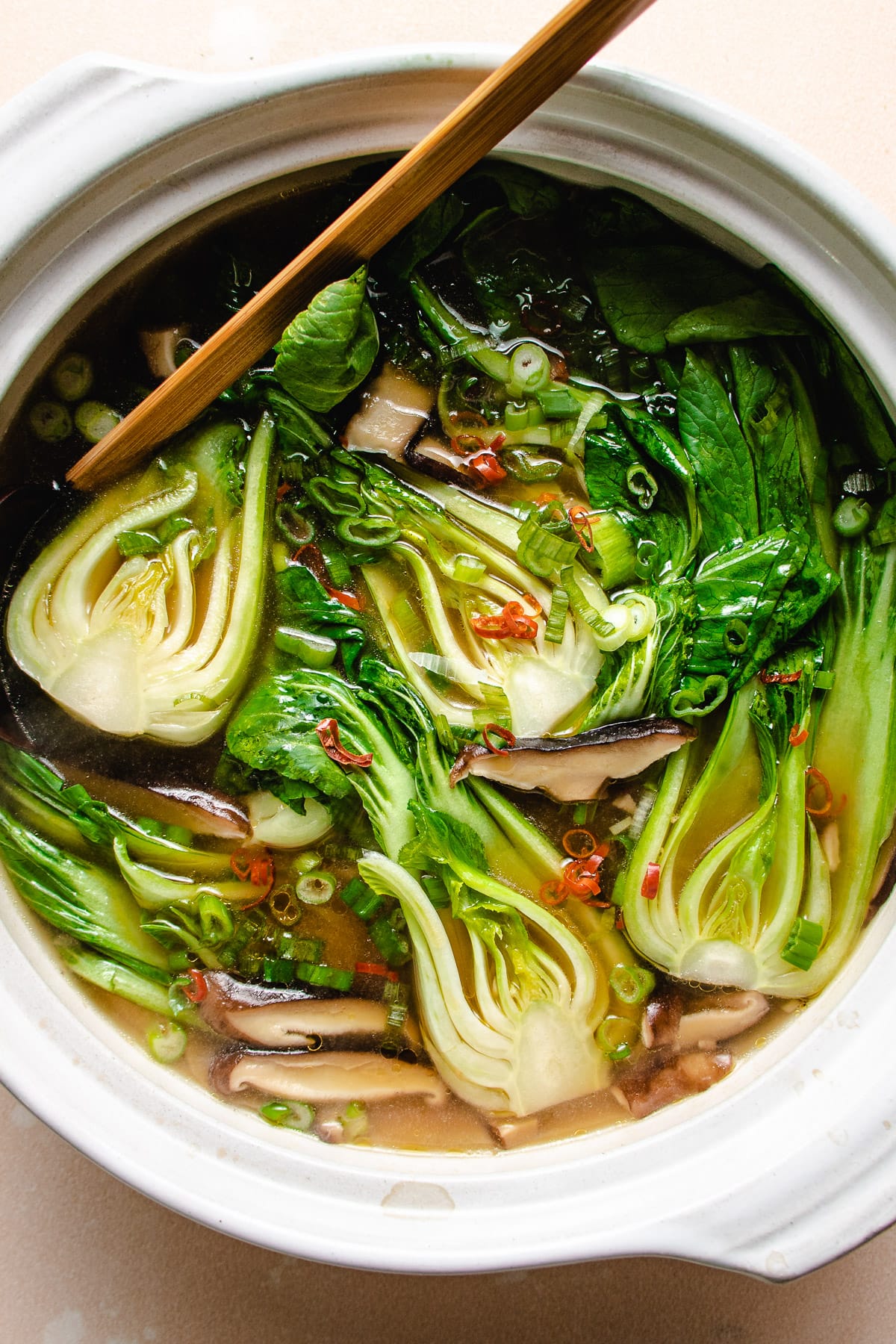Easy Bok Choy: Quick Recipes, Growing Tips, and Storage Solutions
Bok choy, a type of Chinese cabbage, stands out due to its dark green leaves and white stalks. It’s known for a mild, slightly peppery flavor, making it versatile in many dishes. Originating in China, bok choy has gained global popularity for its culinary versatility and nutritional benefits.
Nutritional Benefits of Bok Choy
Bok choy offers numerous nutritional advantages. It’s low in calories, at only about 13 calories per 100 grams, making it great for weight management. Rich in vitamins C, K, and A, bok choy supports immune function, bone health, and vision, respectively. High in fiber, it aids digestion and improves gut health. Moreover, bok choy contains antioxidants like beta-carotene and flavonoids that combat oxidative stress.
Easy Bok Choy Recipes
Quick Bok Choy Stir-Fry
Stir-fry bok choy with garlic and soy sauce for a fast, flavorful dish. Wash and chop 4-5 bok choy stalks; separate leaves from stems for even cooking. Heat 2 tablespoons of oil in a pan over medium-high heat. Sauté 3 minced garlic cloves till fragrant, then add stems. Stir-fry for 2-3 minutes, then add leaves and 2 tablespoons of soy sauce. Cook until leaves wilt. Serve with rice or noodles for a complete meal.
Bok Choy Salad Ideas
Fresh bok choy shines in salads with a crisp, refreshing texture. For a light option, chop 3-4 bok choy stalks and mix with sliced radishes, carrots, and a tangy sesame dressing. For added protein, toss in grilled chicken or tofu cubes. Another variation includes shredding bok choy and combining it with mandarin oranges, sliced almonds, and a ginger-lime vinaigrette.
Growing Bok Choy at Home
Best Conditions for Cultivation
Bok choy thrives in cool weather, making spring and fall ideal seasons for planting. Ensure temperatures stay between 55°F and 75°F for optimal growth. Bok choy prefers well-draining, fertile soil enriched with organic matter. Maintain a soil pH between 6.0 and 7.5. Space plants 6 to 12 inches apart to give each plant adequate room to grow. Consistent moisture levels help prevent bolting, which can be triggered by high temperatures and drought.
Tips for a Healthy Bok Choy Crop
Water the plants regularly to keep the soil consistently moist but not waterlogged. Mulch around the plants to retain moisture and regulate soil temperature. Implement pest control measures by using row covers to protect plants from common pests, such as aphids, flea beetles, and cabbage worms. Regularly inspect the leaves for any signs of infestation and remove affected parts promptly. Thin seedlings to prevent overcrowding, ensuring each plant has space and nutrients to develop fully. Fertilize monthly with a balanced fertilizer to encourage robust growth. Rotate crops yearly to minimize soil-borne diseases and maximize yield.
Storing and Preserving Bok Choy
Effective Storage Techniques
Store bok choy correctly to maintain its freshness. Place it in the vegetable crisper drawer of your refrigerator. Use perforated plastic bags or wrap it in a damp paper towel inside a plastic bag to allow for proper air circulation. Fresh bok choy can last up to four days when stored this way. Check the leaves periodically; discard any that show signs of wilting or yellowing.
Ways to Preserve Bok Choy
Consider preserving bok choy if you need longer storage. Blanch the bok choy in boiling water for two minutes, then immediately place it in ice water to halt the cooking process. Drain and pat it dry with a paper towel. Place the blanched bok choy in freezer bags, removing as much air as possible before sealing. Frozen bok choy can last up to 10 months. Alternatively, pickle bok choy using a mixture of vinegar, sugar, and salt, which can last several weeks in the refrigerator.
Conclusion
Bok choy is a versatile and nutritious addition to your meals, offering a wealth of health benefits and a delightful crunch. Whether you’re cooking up a quick stir-fry or adding it to a fresh salad, bok choy is easy to prepare and integrate into your diet.
Growing your own bok choy at home is both rewarding and straightforward, provided you follow the right conditions and care tips. With proper storage techniques, you can keep your bok choy fresh for longer, ensuring you always have this healthy vegetable on hand.
By incorporating bok choy into your culinary repertoire, you’re not only enhancing your meals but also boosting your overall health. Enjoy the simplicity and benefits of easy bok choy today.





